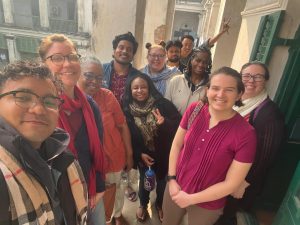Since graduating from seminary in 2011, one of the biggest challenges I’ve faced as the pastor of a small, rural congregation is recruiting, retaining, and replacing leaders within the church.
At Nixon United Methodist Church, we have a practice of rotating new leaders out of leadership after three years. This policy has been challenging to maintain due to the constant turnover and the need for new leaders. If I am honest, finding leaders with the expertise needed only to replace them in three years is exhausting.
In 2024, we created an onboarding and off-boarding process that has taken the burden of recruitment from me and spread the responsibility of leadership to all leaders. Though we have not yet completed the full cycle, the most significant benefit to date is the amount of time saved from having to persuade people to step into the unknown world of church leadership. It has been an enormous blessing to me, and perhaps it will be for you as well.
Planning a Smooth Transition—A Leadership Life Cycle
We begin this process with the leaders in the third year—they know they will be cycling out of leadership by the end of the year, and their primary task is to recruit new leaders. Because their sphere of influence often includes people with similar skill sets, they become adept at identifying those who would excel in their specific leadership positions. Once they have identified the new leader, they extend the invitation and begin onboarding them so that when the new leader assumes leadership, they are equipped with all the necessary tools.

The onboarding of new leaders includes clear expectations of the time commitment (no one serves for life) and job expectations. This means they know what is expected of them before they even begin. When onboarding starts, they are invited to attend meetings, ask questions, and voice opinions.
Once the new leader officially begins their term, they are paired with a person in the third year of leadership, allowing them to continue asking questions, learning procedures, and ensuring that institutional knowledge is passed down.
As they begin their second year of leadership, they are now fully equipped to start new projects while ensuring that any older projects are completed successfully. The expectation during this second year is that they will be the main drivers of the committee they serve on while empowering others to ask questions, find their voice, and experience what it means to serve the church with professionalism and joy.
Finally, that new leader is in the third year, and they begin the process again by helping to recruit a new leader. Their emphasis shifts not to creating new projects, but rather to ensuring that their knowledge is passed on to the next generation of leaders. They are the primarily recruiting personnel for new leadership, identifying and selecting individuals with the necessary skills for leadership roles.
 The Rev. B.T. Gilligan ’11 is senior pastor at Nixon UMC, where he has served since July 2017. He holds an M.B.A. from Dakota Wesleyan University, an M.Div. from Pittsburgh Theological Seminary, and a B.A. from Indiana University of Pennsylvania in criminology and religious studies. B.T. lives in Penn Township with his wife, Lisa, and four children Samuel, Olivia, Elliott, and Gabriel. In his spare time, he enjoys skiing, craft beer, running, and playing Magic: The Gathering.
The Rev. B.T. Gilligan ’11 is senior pastor at Nixon UMC, where he has served since July 2017. He holds an M.B.A. from Dakota Wesleyan University, an M.Div. from Pittsburgh Theological Seminary, and a B.A. from Indiana University of Pennsylvania in criminology and religious studies. B.T. lives in Penn Township with his wife, Lisa, and four children Samuel, Olivia, Elliott, and Gabriel. In his spare time, he enjoys skiing, craft beer, running, and playing Magic: The Gathering.
Read Next



